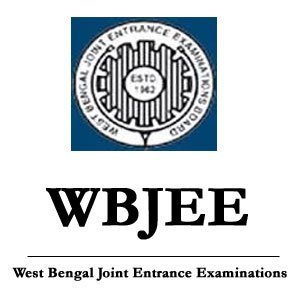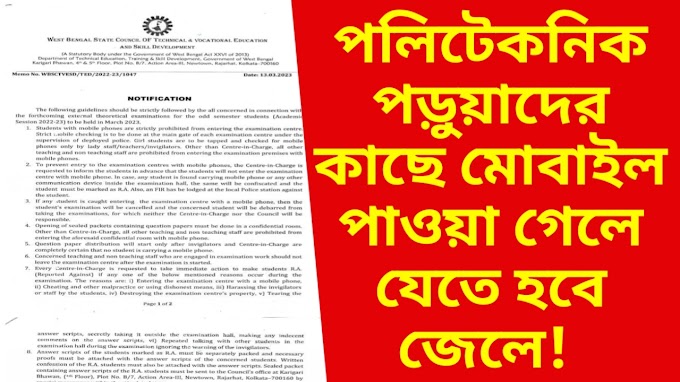All Main Subjects :
1) Principles of Electronic Communication
2) Electronic Devices and Circuits
3) Digital Electronics
4) Electric circuits and network
5) Computer Programming Language
All Sessional Subject :
1) Principles of Electronic Communication Lab
2) Electronic Devices and Circuits Laboratory
3) Digital Electronics Laboratory
4) Electric circuits and network Laboratory
5) Computer Programming Language Laboratory
Name of the Subject : Principles of Electronic Communication
Course Code: ETCE/PEC/S3 Semester: Third
Duration: One Semester (Teaching - 15 weeks + Internal Exam-2 weeks ) Maximum Marks: 100 Marks
Teaching Scheme: Examination Scheme
Theory: 4 contact hrs./ week Class Test (Internal Examination): 20 Marks Practical: 3 contact hours/ week Attendance =10 marks and Quizzes/Assignment/Student Activity = 10 marks End Semester Examination: 60 Marks C
redit: 4 ( TH:3+PR:1 ) Practical: 100 Marks
Content (Name of the topic):
Group A
Unit 1 - Basics of Electronic communication :
1.1 Electromagnetic spectrum, elements of basic electronic communication system
1.2 Concept of noise, signal to noise ratio
1.3 Idea of simplex, half duplex and full duplex
1.4 Basic idea of Fourier series and Fourier transform
Unit 2 - Analog modulation techniques :
2.1 Concept of modulation and need for modulation
2.2 Amplitude Modulation( AM ) – Mathematical representation of AM wave, Modulation Index, percentage of modulation, Bandwidth and side bands, Representation of AM wave in time domain and frequency domain, Concept of DSB, SSB and VSB, Power requirement in AM wave
2.3 Frequency Modulation(FM) -Mathematical representation of FM wave, Frequency deviation, Modulation Index, Representation of FM wave in time domain and frequency domain, Bandwidth requirement, NB and WB frequency modulation
2.4 Phase Modulation(PM) - Mathematical representation of PM wave, Modulation Index
2.5 Comparison of AM, FM and PM
Group B
Unit 3 - Transmitter and Receiver :
3.1 Generation of AM wave – Collector modulated class C amplifier for generation of AM wave, operation of Balanced Modulator, Filter method for SSB generation, Block diagram of AM broadcast transmitter
3.2 Receiver of AM – Block diagram of AM super heterodyne receiver and its working principle, IF amplifier and choice of IF, Mixer and converter, Alignment and tracking, Receiver characteristics and testing, sensitivity, selectivity and fidelity
3.3 Demodulation of AM – Envelop detector, AGC and delayed AGC circuit and its operation
3.4 Generation of FM wave – Direct (Varactor diode modulator) and Indirect (Armstrong) method, Block diagram and operation of FM broadcast transmitter
3.5 Receiver of FM – Block diagram and operation of FM receiver, Pre-emphasis and Deemphasis, AFC and PLL
3.6 Demodulation of FM – Foster-Seeley discriminator, ratio detector, limiter
Unit 4 - Wave propagation :
4.1 Concept of Electromagnetic Wave and its properties – Transverse electromagnetic wave, concept of plane and spherical wavefronts, Reflection, Refraction, Polarization, Diffraction, radiation, absorption, attenuation, interference
4.2 Ground wave propagation – VLF propagation
4.3 Sky wave propagation – Ionosphericlayers, virtual height, critical frequency, MUF, skip distance
4.4 Space wave propagation – Line of sight propagation, multipath space wave propagation, Radio horizon, Duct propagation (microwave space wave propagation)
4.5 Tropospheric scatter propagation
Unit 5 -Telephony :
5.1 Block diagram and operation of Telephone hand set, Transmitter, Receiver, side tone and anti-side tone circuit and operation, ringer, switch hook, tone dialing, DTMF, Hybrid circuit and its operation, local loop
5.2 Block diagram of Electronic exchange, Space division switching, Time division switching
5.3 Numbering plan of telephone network- National and International scheme of numbering plan
Group C
Unit 6 - Analog Pulse Modulation :
6.1 Introduction and comparison with continuous wave modulation and advantages, Sampling Theorem, Nyquist rate, natural and flat top sampling
6.2 Definition, principle of generation and reception of PAM (Pulse Amplitude Modulation), PWM (Pulse Width Modulation) and PPM (Pulse Position Modulation) with block diagram and applications
Unit 7 - Digital Communication Systems and Coding Methods :
7.1 Idea of Digital Communication – Advantages of digital communication over analog communication, Elements of digital communication system with block diagram – source, channel, transmitter and receiver
7.2 Channel characteristic – Bit rate, Baud rate, channel capacity, Synchronous and Asynchronous data
7.3 Information Theory – Relationship between data speed and channel capacity, Hartley’s Law, Hartley – Shannon Theorem
7.4 Error correction – Causes of error and its effect, error detection and correction using Parity Check, Cyclic Redundancy Check (CRC)
7.5 Idea of Inter Symbol Interference (ISI) and interpretation of EYE diagram
7.6 Line coding format – RZ, NRZ, AMI and Manchester code
Suggested List of Laboratory Experiments
1 To study generation of AM signal and the waveforms
2 To study Envelop detector for demodulation of AM and observe the effect
3 To study generation of FM signal using varactor and reactance modulator and the waveforms
4 To study detection of FM signal using Foster Seeley method.
5 To study the frequency spectrum of AM and FM using spectrum analyzer
6 To study super heterodyne AM receiver and measurement receiver parameters as i)Sensitivity, ii) selectivity and iii) Fidelity
7 To study PAM modulation and demodulation
8 To study PWM modulation and demodulation
9 To study PPM modulation and demodulation
10 To study the analog signal sampling and reconstruction for different sampling frequency 11 To study the different blocks of a telephone receiver
12 Mini projects on
(A) AM radio receiver
(B) FM radio receiver
(C) AM transmitter
(D) FM transmitter
Name of the Subject: Electronic Devices and Circuits
Course Code: ETCE/EDC/S3 Semester: Third
Duration: One Semester (Teaching - 15 weeks + Internal Exam-2 weeks ) Maximum Marks: 100 Marks
Teaching Scheme: Examination Scheme
Theory: 4 contact hrs./ week Class Test (Internal Examination): 20 Marks
Practical: 3 contact hours/ week Attendance =10 marks and Quizzes/Assignment/Student Activity = 10 marks End Semester Examination: 60 Marks
Credit: 4 (TH:3+PR:1) Practical: 100 Marks
Content (Name of the topic)
Group – A
Unit 1 - Basic of Network and Network Theorems
1.1 Kirchhoff’s Voltage Law, Kirchhoff’s Current Law, Voltage divider, current divider rule, star – delta conversion, Source Transformation and duality.
1.2 Node and Mesh Analysis using Independent and Controlled Source
1.3 Thevenin’s Theorem, Norton’s Theorem, Superposition Theorem, Maximum Power Transfer Theorem, Reciprocity Theorem – simple problems.
1.4 Idea of resonance – series and parallel resonant circuits – Q value, Selectivity and Bandwidth.
Unit 2 - Graph Theory
2.1 Graph of a network, tree, incident matrix, concepts of path, cycle and tree, independent loops
2.2 F – Tie Set and analysis of resistive network using tie – set
2.3 F - Cut Set and analysis of resistive network using cut – set. Duality
Unit 3 - Two Port Network
3.1 Introduction of Two Port Network - Open circuit impedance parameters, Short circuit impedance parameters, hybrid parameters, transmission parameters – simple problems.
3.2 Open and short circuit impedance, characteristics impedance and its relation with open and short circuit impedance, propagation constant and image impedance.
Group – B
Unit 4 - Filter Circuits
4.1 Definition and relationship between neper and decibel.]
4.2 Basic idea of passive filters – definition of pass band, stop band, cut – off frequency.
4.3 Constant K – prototype filters: a) Low pass filter b) high pass filter c) Band pass filter d) Band reject filter
4.4 Active filter - Basic idea, advantages and disadvantages of basic filters, application of filter circuits.
Unit 5 - Attenuators and Equalizers
5.1 Basic idea of attenuators, difference between attenuator and filter, symmetrical T and π attenuator – field of application of attenuators.
5.2 Concept of equalizer – purpose of equalizer and its classification – Difference between series & shunt equalizer and their field of applications
*Note: Join our telegram group for more premium job notifications.
Join Us(Mandatory to Join):
| Join our WhatsApp group for Job Updates: | Click Here |
| Join our telegram group(22,000+ Members): | Click Here |
| Telegram group(Government Job Updates): | Click Here |
| Join our Facebook group(Jobs All India): | Click Here |
| Join our WhatsApp group(Mechanical Branch Only): | Click Here |
| Scholarship Updates: | Click Here |
| Join our Kolkata Job WhatsApp Group: | Click Here |
| Follow us on Facebook | Click Here |
| Follow us on LinkedIn: | Click Here |
| Follow us on Twitter: | Click Here |
| Follow us on Instagram: | Click Here |
Unit 6 -Transmission Lines
6.1 Types of transmission lines: Parallel wire and coaxial cable
6.2 Primary and secondary constants of transmission lines
6.3 Characteristic impedance – Reflection co-efficient – Standing wave ratio and their relationship
6.4 Simple matching methods, single and double stub match for transmission lines 6.5 Losses in transmission lines
6.6 Distortion in transmission line – Causes of distortion and condition for distortion less transmission – Practical feasibility for distortion less transmission
সম্পূর্ণ Semester মাত্র Rs.999/- Call & WhatsApp : 8972642479 / 7074625691(10am to 5pm Only) NOTE : যদি তোমরা মান্থলি সিস্টেমে পেমেন্ট করতে চাও তাহলে প্রথমে Rs.499/- তার পর থেকে মাসের মাস Rs.199/- করে পেমেন্ট করার পর অবশ্যই পেমেন্ট পেজ স্ক্রীনশট টি আপলোড করবে FILE UPLOAD SECTION ER মধ্যে।





.png)


.png)



Post a Comment
0 Comments